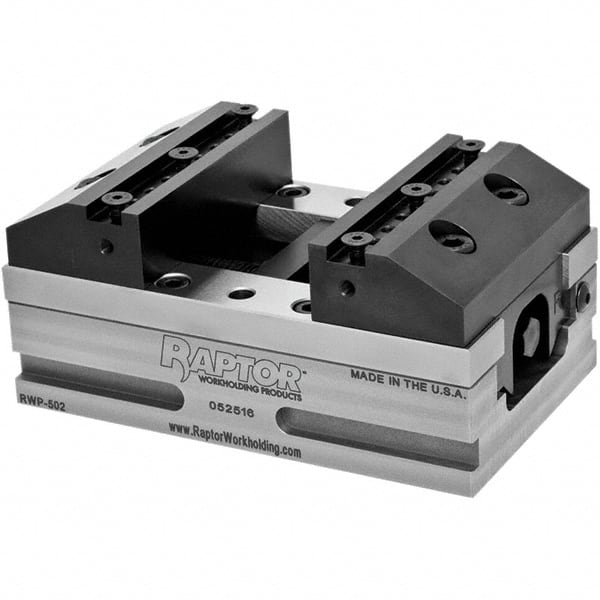
What are the different vise dimensions?
Vises are typically available in 4, 5, 6 & 8" sizes. These sizes refer to the width of the jaws. The larger and heavier the object to be held the larger the vise required. As a general rule of thumb, the maximum throat depth is typically proportionate to the jaw width.
What should I look for in a bench vice?
While selecting a bench vise, you have to check its throat depth – this is the distance from the top side of the jaw to the top of the slide below the jaw. Larger throat depths mean you can hold larger workpieces. Bench vises have varying jaw widths. For larger objects, you need bench vises that have bigger jaw widths.
Is a 4 inch vise enough?
For general household DIY, a 4- to 5-inch vise is large enough to handle most tasks. (This measurement is the length of the jaws from end to end and is maximum amount of contact your vise has with the workpiece.)
How thick should wood vise jaws be?
9/4 thickThe bench face and end vises are both Veritas twin screw of 24 inch length. The jaws are 9/4 thick, 8 inches deep and made of hard maple.
Who makes a good vice?
BEST OVERALL: Forward 8-Inch Bench Vise Ductile Iron.RUNNER-UP: Wilton 11106 Wilton Bench Vise.BEST BANG FOR THE BUCK: TEKTON 4-Inch Swivel Bench Vise 54004.UPGRADE PICK: Wilton WS8 Shop Vise (63304)BEST FOR WOODWORKING: Pony Jorgensen 27091 Medium Duty Woodworker's Vise.More items...•
Are Irwin vise any good?
The Bottom Line. The Irwin Multi-Purpose Vise is very attractive for about $95 as long as you keep in mind its light-duty design intent. It's a great fit for a DIYer's shop or garage and has some potential for Pros that don't need 2 tons or more (literally) of clamping force.
How do I choose a woodworking vise?
7:0312:00Pick the RIGHT vise for woodworking. - YouTubeYouTubeStart of suggested clipEnd of suggested clipThey make your bench more expensive. And time consuming to build because you're buying a second viceMoreThey make your bench more expensive. And time consuming to build because you're buying a second vice. And it really needs to be quick release your tail vise needs a dog built into the jaw.
How do they measure vices?
The throat depth is how deep the jaws of a vice are and is measured by the vertical distance from the top edge of the jaws down to the top of the screw/slide. This indicates the maximum height of a workpiece that is capable of fitting into the throat of a vice.
Where are Wilton vises made?
The new Wilton Tradesman vises are made in Taiwan, and will be replacing current SKUs. The new Mechanics Pro vises, which have lower price points, feature an enclosed spindle, precision machined slide, a needle roller thrust bearing design, and 360° swivel base.
What wood should I use for vise jaws?
Generally, maple is used for wood vise jaws as it is durable enough to withstand the clamping force of a vise. However, softer woods such as pine can be used if your projects will be made from mostly soft hardwoods like cherry to prevent marring.
What vise does Paul Sellers use?
Paul has also recommends the Eclipse 9″ Quick Release vise as it is more readily available and seems to hold up well.
What is a front dog on a vice?
On woodworking vices, the dog is an adjustable piece of metal incorporated into the front of a vice in order to prevent a workpiece from moving if it is laid horizontally on top of a woodworking bench.
How do I choose a woodworking vise?
7:0312:00Pick the RIGHT vise for woodworking. - YouTubeYouTubeStart of suggested clipEnd of suggested clipThey make your bench more expensive. And time consuming to build because you're buying a second viceMoreThey make your bench more expensive. And time consuming to build because you're buying a second vice. And it really needs to be quick release your tail vise needs a dog built into the jaw.
Are clamp on vises good?
As such, clamp-on vises are typically most useful for light duty operations. That's not to say that they can't take some abuse and some torque, but the upper limit just isn't as high as a traditional vise.
How do I know my vise size?
This is determined by the length of the screw (which holds the jaws together), and the longer the screw, the further the sliding jaw can open from the stationary jaw. The opening indicates the maximum capacity of the jaws, meaning that the vice will not be able to clamp an object wider than this.
Are pony bench vises any good?
This is a great heavy duty vise at a price that can't be be beat. This was a replacement for a Harbor Freight vise I had. The Pony is definitely better constructed. Clamping force is excellent.